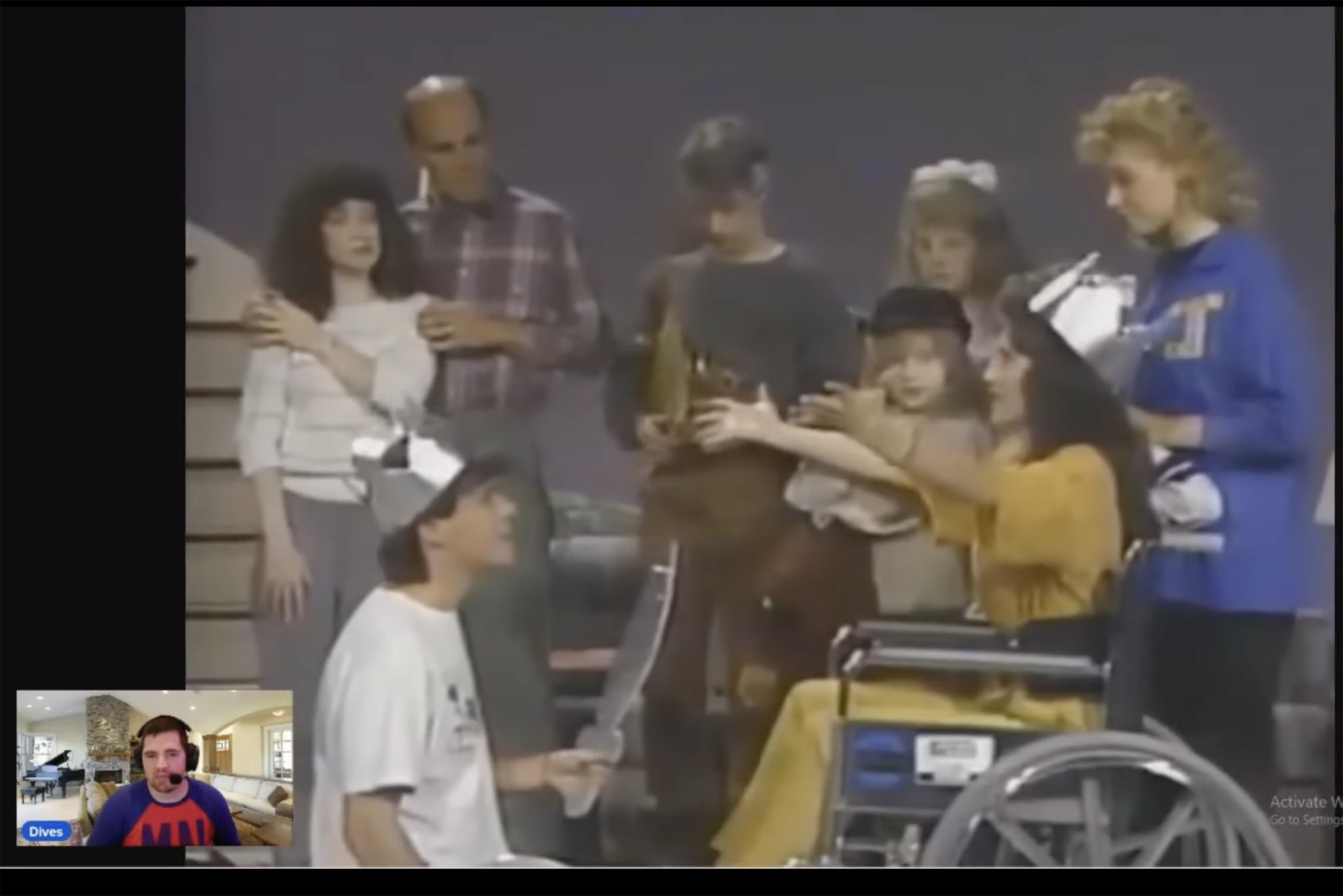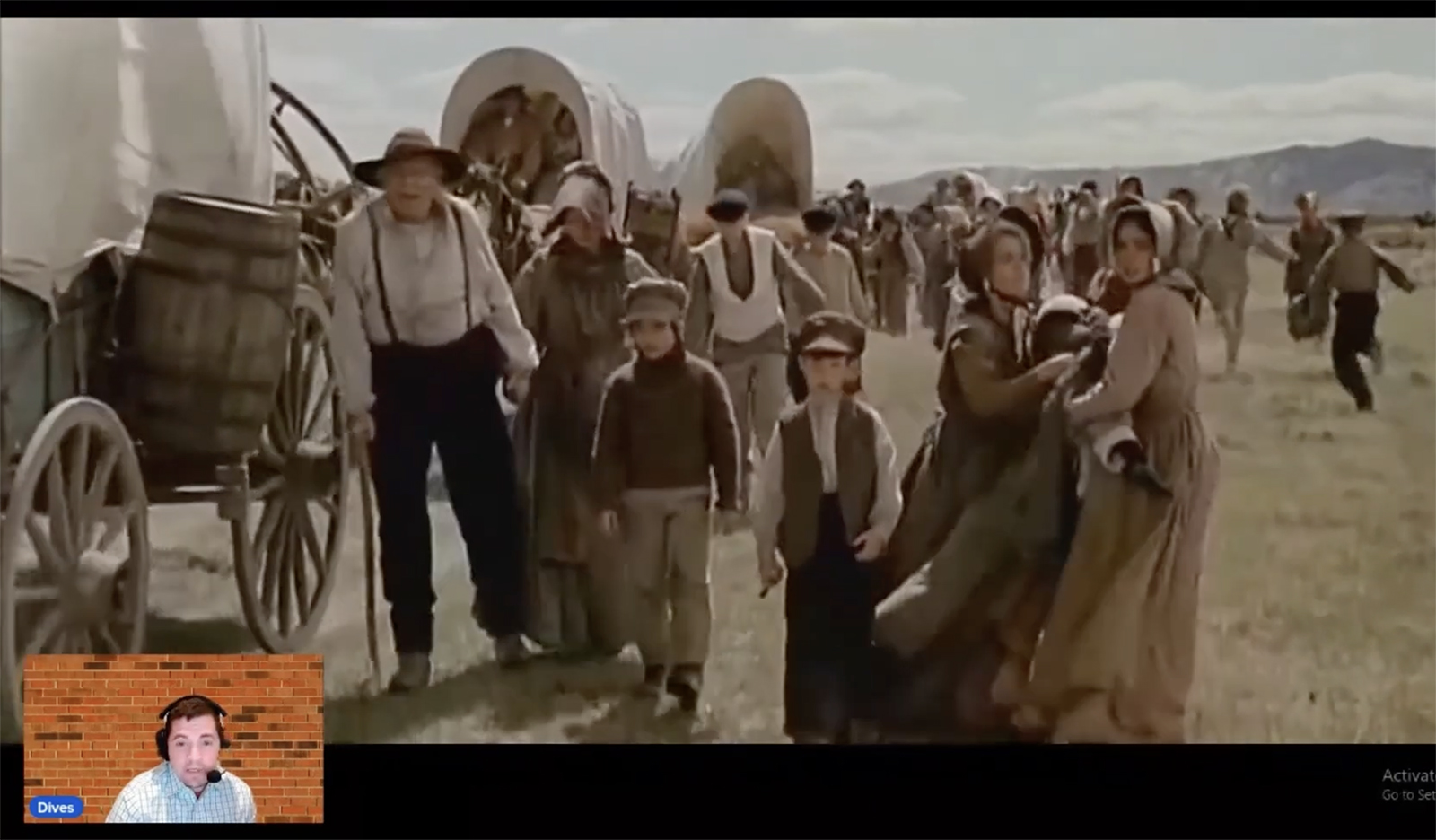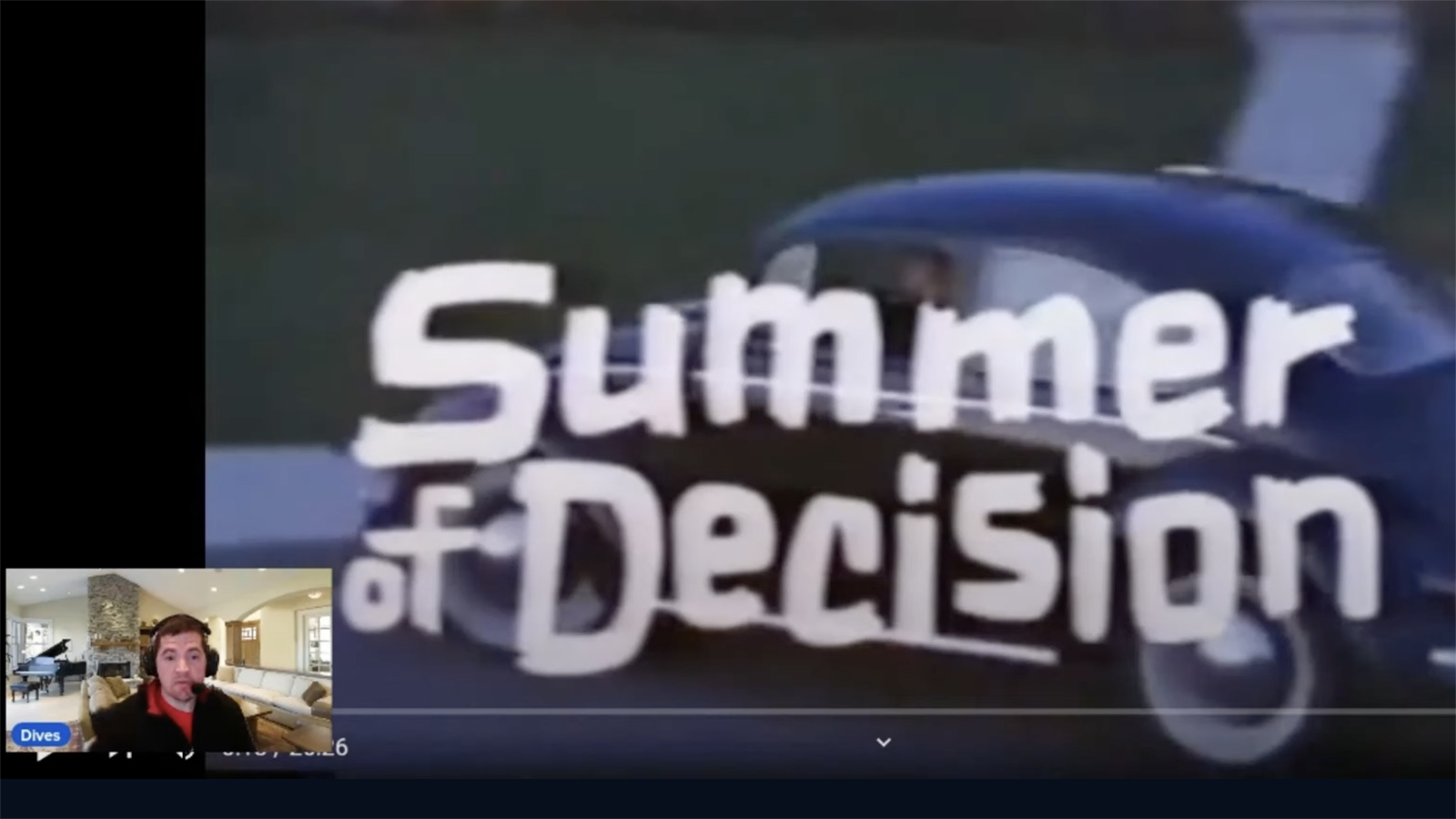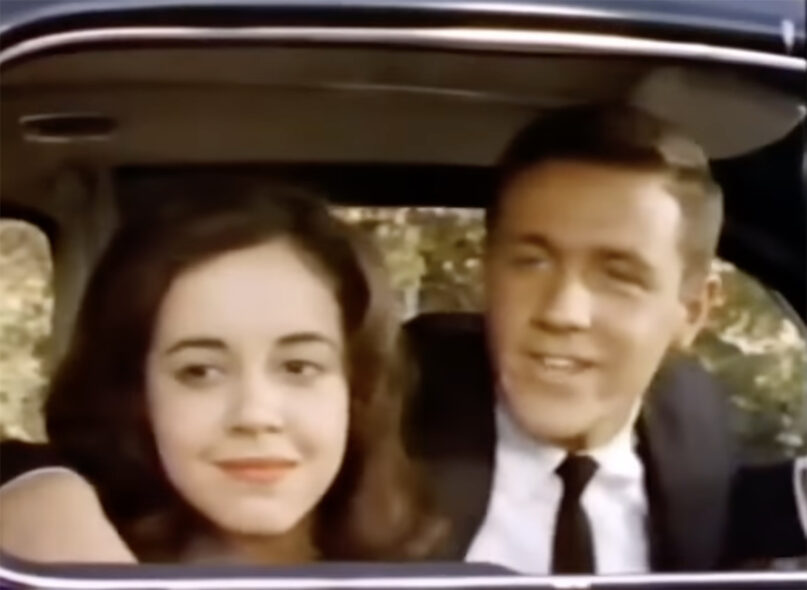(RNS) — A young woman has to decide whether to marry her sweetheart right now or wait months to get married in an LDS temple. He’s pushing to tie the knot now, but she’s unsure. If she makes the wrong decision, the consequence could be (spoiler alert!) that she and her new husband both die in a car crash on the way home from their quickie wedding. They will not be together in heaven for all eternity.*
That movie is “Summer of Decision,” produced in 1962 by the Education Department of the Church of Jesus Christ of Latter-day Saints. The cultural critic “Dives” (pronounced DEE-vays) says it’s his favorite LDS-produced film and he’s viewed it over 30 times.
“It just encapsulates that whole era in saying, ‘If you get married outside the temple, your life is going to literally be ruined,’” he said. But while it’s easy to mock the half-hour film’s stock characters and subtle-as-a-brick message, he also genuinely loves it and other such church films.
In fact, he loves them enough to view them weekly. Every Monday evening at 9:30 p.m. Eastern time (7:30 p.m. in Utah), Dives does a live showing of one of these movies on his YouTube channel, Mormon Movie Reviews, with snarky and sometimes irreverent commentary. The channel is not yet as popular as his other weekly podcast, Mormon News Roundup, but the community is slowly expanding as people who grew up watching these films find out about the channel. (Note: The two channels are in the process of merging to the Mormon News Roundup site.)

Dives. (Courtesy photo)
Dives was one of those people who watched the movies over and over as a kid.
“TV in my house was off limits,” he explained. “So what did we have? We had a wide variety of LDS films to pick from, and that’s what set theology for me. That’s where I developed my relationship with the Church, through these films. A lot of people are in the same boat.”
Dives, who is in his 40s, said that, more than any Sunday School lesson or General Conference talk, these films shaped his worldview. “When you watch ‘Saturday’s Warrior,’ you get a visceral reaction. It stirs emotions within you. You don’t often get that from a typical Sunday school lesson.”
Revisiting these films years later, he said, can bring up different feelings than he had as a child and teenager. These days, he’s not as active in the Church and resonates with the “Saturday’s Warrior” character of Jimmy, who is questioning LDS faith and culture. But when he was younger, Dives saw himself in the character of Wally Kessler, a missionary with big dreams of gaining glory and many converts to the Church.
“Saturday’s Warrior,” he noted, reflects the times in which it was written. It started as a road show in the early 1970s, though the film version (which was not officially produced by the Church) didn’t come out until 1989. The storyline and characters reveal many of the preoccupations of American Latter-day Saints in that period, especially the emphasis on having large families.

Dives, left, screens “Saturday’s Warrior” on his Mormon Movie Reviews YouTube channel. (Video screen grab)
Various church films also included didactic messages about the importance of caring for others, and Dives said these are some of the sweetest and most powerful of all.
“If you watch my review of ‘Cipher in the Snow’ (1974), I actually cry at the end,” he admitted. That film, which the Church adapted from a short story in “Reader’s Digest,” focuses on an adolescent loner whose isolation and marginalization by his peers leads to a tragic end. The Church did not use its name or an overt religious message in the film so that it could be shown widely in public schools. The message of “Cipher,” Dives said, is that each person has intrinsic value, but that sense of worth needs to be nurtured by the people around them.
Most of the movies, unlike “Cipher,” were clearly intended for an LDS insider audience. Wikipedia lists more than a hundred such films that were officially commissioned or produced by the Church, with the heyday being from the 1960s to the 1980s.
Some of these were vehicles for church members to learn about LDS history — and those lessons stuck, even if they turned out to be inaccurate. One of the church films that marked Dives’s childhood was “The Three Witnesses” (1968), about the three companions of Joseph Smith who said they saw the plates of the Book of Mormon in the late 1820s. But the movie omitted key facts about all three witnesses’ later apostasies from the Church, focusing only on the positive.
“When you look at the historical films, you see that the Church has a consistent pattern of emphasizing the faith-promoting aspects of every story as much as it possibly can,” he said. Another example is the 1993 movie “Legacy,” the pioneer tribute that was shown for years in Temple Square in Salt Lake City but never depicted or even mentioned polygamy.

Dives, left, screens “Legacy” on his Mormon Movie Reviews YouTube channel. (Video screen grab)
The Church has recently become more transparent about thorny issues within its own history, but Dives doesn’t necessarily expect that to translate into its films, for a couple of reasons.
For one thing, its filmmaking enterprises have been drastically reduced. Apart from its well-received Book of Mormon videos (2019–present) and the feature-length box office bomb “Meet the Mormons” (2014), the Church has largely gotten out of the moviemaking business. For another, it’s harder to render historical complexity and nuance on the screen than it is to make facile propaganda.
As an example, “The First Vision” (1976) film was based on the long-dominant account of Joseph Smith seeing the Father and the Son in the 1820s, and that’s how the scene is portrayed. But what happens when there are multiple and varying accounts of that same vision?
“Trying to do that on film is virtually impossible because of the different stories that were told,” Dives said. “Was it one being, or was it one right after another? Was there a host of angels?”
Dives said he has not encountered copyright resistance from the Church as he mines its catalog for these long-forgotten movies.

Dives, left, offers commentary while screening the 1962 film “Summer of Decision” on his Mormon Movie Reviews YouTube channel. (Video screen grab)
“For most of these old church films, the Church has either not copyrighted them at all or has let the copyright lapse,” he said. “There’s only a few officially produced Church films that the Church will copyright strike, and those are the ones that are the least flattering and haven’t aged well. I’m talking about ‘Johnny Lingo’ (1969) and ‘Journey to Become’ (2013). But in general, the church wants these to be distributed as widely as possible.”
Dives also reviews movies that center on the Mormon experience but were independently produced and aren’t affiliated with the Church, like the missionary comedy “The Best Two Years” (2003) or the recent Hulu series “Under the Banner of Heaven” (2022). But the ones that are closest to his heart are the films he grew up on.
“There’s plenty of cheesy ones out there, plenty of fodder that you can mock and make fun of,” he said. “That’s like shooting fish in a barrel. But it’s just so much fun to go back. These movies are ageless, and they awaken so many emotions in me. I just love them to death.”
*Another spoiler alert: That’s not actually what happens, because — in another hackneyed plot trope — it was all a dream. There is still time for this young couple to get married in the temple! Get on that before you die a horrible death!
Related content:






